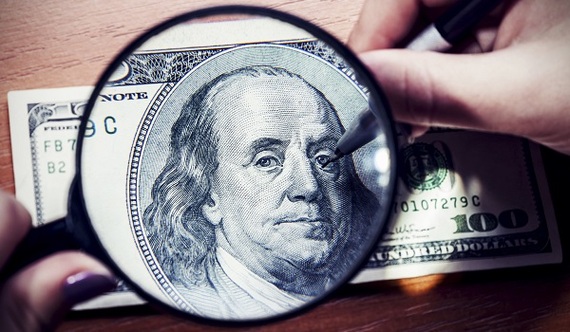By: Alex Reichmann, Counterfeit Money Expert and CEO of iTestCash.com
According to the United States Department of the Treasury, about $70 million in counterfeit notes are being circulated in the U.S. with one out of every 10,000 notes being fake. The thing about counterfeit money is that it is not easy to keep track of, since most of the statistics that are available largely depend on the number of notes that have been seized. In addition, there are notes that circulate a few times before they eventually are seized. Currently, most counterfeiters use inkjet printers, photocopiers, and computers to make money, unlike in the past where they needed skilled printers and heavy printing presses. This has made money counterfeiting quite common.
Business owners and their employees need to be educated on how to spot counterfeit money, so that they do not lose hundreds or thousands of dollars in profit by receiving fake bills. Here are some things to look out for when you receive cash to verify that it is genuine:
1. Color shifting ink
The first thing to do is to look at the bottom right corner and check whether the color shifts when you tilt it. By the "20" on a $20 bill, the color is copper, but when you tilt it, the color changes to green(ish). On the new $100 bills, the color change from copper to green happens on the liberty bell symbol.
2. Red and blue threads
On an authentic bill, there are threads woven in and out of the note. Most counterfeiters try to achieve this look by printing red and blue threads on the surface of the note. If you look closely at their work, you will see that the threads are on the surface.
3. Watermark
This is usually a copy of the portrait on the note. The watermark can only be seen when you hold the note up against the light. The watermark should be on the right side of the bill and should be an exact replica of the portrait on the note. If there is no watermark when you hold up the note against the light, then it is definitely counterfeited.
4. Security Thread
The security strip runs vertically on the note and can be seen when held up against a light. You won't find this feature on a counterfeit bill.
Here are some things that businesses should do to protect themselves against counterfeit money:
- Hold a suspicious note against an original - Compare the notes and make sure that everything is the same, such as the font used to write the serial number, the face on the note, the color, paper, etc. Make sure that the money you are comparing it with is of the same denomination.
Ask for a different note - If you are suspicious during the payment process, the best thing to do is to ask for a different note.
If you discover that you have been given counterfeit money, the best thing to do is to contact the police and hand over the note to them. The police will then alert the local business community about the incident so that everyone is aware and on the lookout for counterfeit money.
Alex Reichmann is a counterfeit money expert and CEO of iTestCash.com, where he has worked with hundreds of business owners providing them with retail security products for businesses.
This article was provided by our partners at moneytips.com.
To Read More From MoneyTips:
Fun Facts About U.S. Money (Infographic)
Is It Time to Abolish The Penny?
World's Currency Reserves Start
Photo ©iStock.com/EduardLysenko
